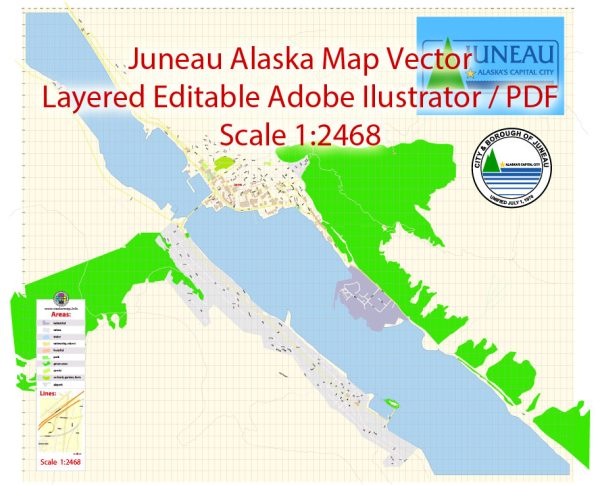Juneau, Alaska, like many places in the United States, has a diverse energy system that provides power to the city and its residents. The energy mix in Juneau includes a combination of renewable and non-renewable sources. Here’s an overview of the energy system in Juneau:
- Hydropower: Juneau relies heavily on hydropower for its electricity generation. The Snettisham and Lake Dorothy hydroelectric facilities are significant sources of power for the city. These hydroelectric facilities take advantage of the abundant water resources in the region and play a key role in reducing the city’s carbon footprint.
- Diesel Generators: Due to the challenging geography of Juneau, some areas are not connected to the hydropower grid. These areas often rely on diesel generators for electricity, which are less environmentally friendly and more expensive than hydropower.
- Renewable Energy: Besides hydropower, there are efforts to incorporate other renewable energy sources. Wind and solar power, though less prominent than hydropower, are being developed to diversify the renewable energy portfolio.
- Interconnection: Juneau’s energy grid is somewhat isolated due to its geographic location, with no road connections to the rest of Alaska. This isolation has led to efforts to improve energy efficiency and explore interconnection opportunities to the mainland. The undersea electrical cable known as the “AELP Intertie” connects Juneau to the rest of Alaska’s power grid, allowing for the exchange of electricity between the regions.
- Energy Conservation: Due to its isolation and unique energy challenges, Juneau has also focused on energy conservation and efficiency measures. Residents and businesses often engage in energy-saving practices to reduce energy consumption.
- Government Initiatives: The city and state governments have supported renewable energy and sustainability initiatives. These include incentives for energy-efficient construction, energy conservation programs, and policies aimed at reducing greenhouse gas emissions.
Juneau’s energy system reflects its unique geographical and environmental challenges, with a strong focus on hydroelectric power and efforts to diversify its renewable energy sources to reduce its reliance on fossil fuels. The city’s commitment to sustainability and energy conservation is a key aspect of its energy landscape.


 Author: Kirill Shrayber, Ph.D.
Author: Kirill Shrayber, Ph.D.